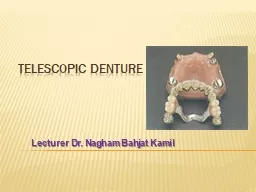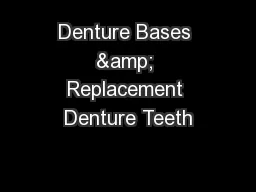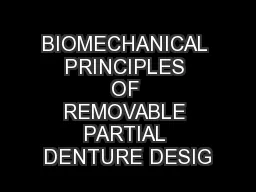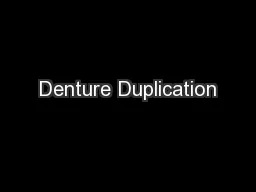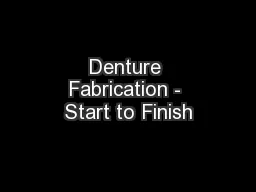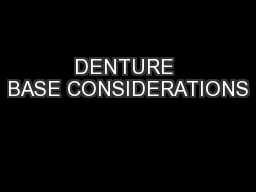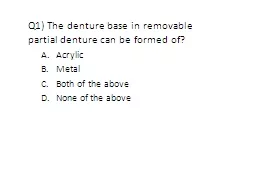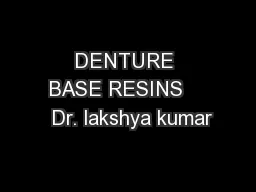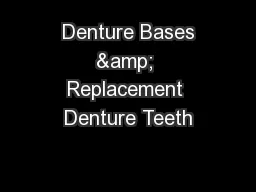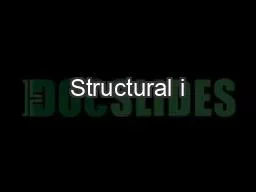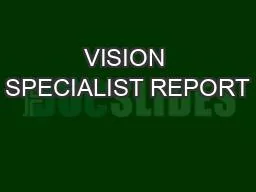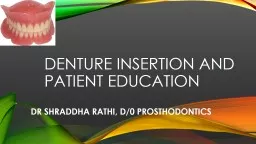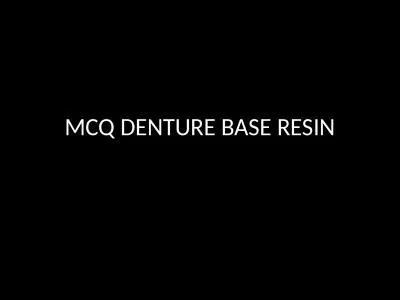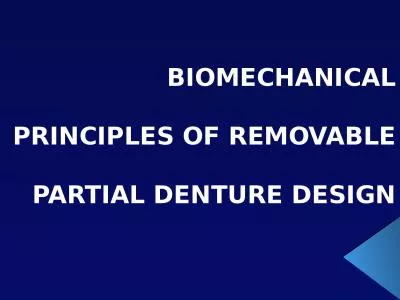PPT-Telescopic Denture Lecturer Dr. Nagham Bahjat Kamil
Author : onionchevrolet | Published Date : 2020-06-15
The ideal goal of good dentist is to restore the missing part of oral structure phonetics and look of the patient The most important is restored the normal
Presentation Embed Code
Download Presentation
Download Presentation The PPT/PDF document "Telescopic Denture Lecturer Dr. Nagham ..." is the property of its rightful owner. Permission is granted to download and print the materials on this website for personal, non-commercial use only, and to display it on your personal computer provided you do not modify the materials and that you retain all copyright notices contained in the materials. By downloading content from our website, you accept the terms of this agreement.
Telescopic Denture Lecturer Dr. Nagham Bahjat Kamil: Transcript
Download Rules Of Document
"Telescopic Denture Lecturer Dr. Nagham Bahjat Kamil"The content belongs to its owner. You may download and print it for personal use, without modification, and keep all copyright notices. By downloading, you agree to these terms.
Related Documents

